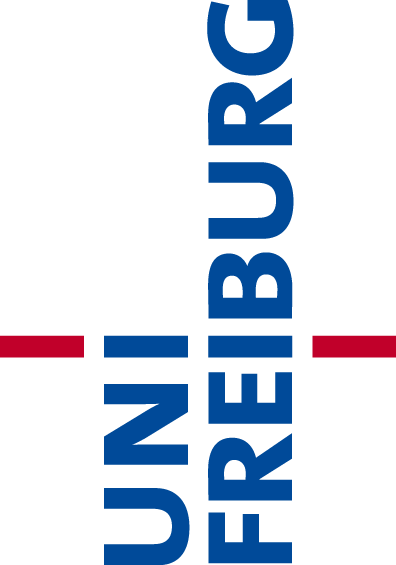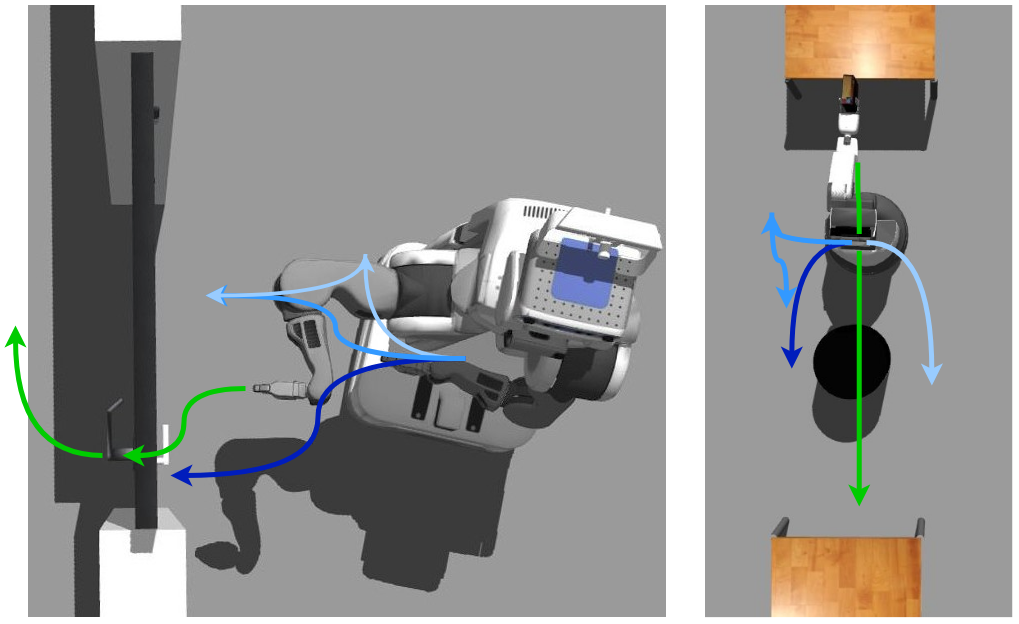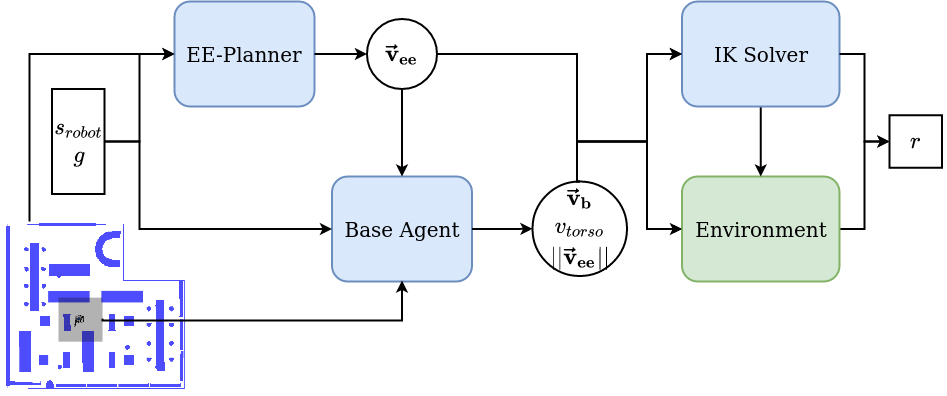
N2M2:Learning Navigation for Arbitrary Mobile Manipulation Motions in Unseen and Dynamic Environments
Daniel Honerkamp, Tim Welschehold, Abhinav Valada
Despite its importance in both industrial and service robotics, mobile manipulation remains a significant challenge as it requires a seamless integration of end-effector trajectory generation with navigation skills as well as reasoning over long-horizons. Existing methods struggle to control the large configuration space and to navigate dynamic and unknown environments. As a result, mobile manipulation is commonly reduced to sequential base navigation followed by static arm manipulation at the goal location. This simplification is restrictive as many tasks such as door opening require the joint use of the arm and base and is inefficient as it dismisses simultaneous movement and requires frequent repositioning.

Mobile manipulation tasks in unstructured environments typically require the simultaneous use of the robotic arm and the mobile base. While it is comparably simple to find end-effector motions to complete a task (green), defining base motions (blue) that conform to both the robot’s and the environment’s constraints is highly challenging. We propose Neural Navigation for Mobile Manipulation (N2M2), an effective approach that learns feasible base motions for arbitrary end-effector motions. The resulting model is flexible, dynamic and generalizes to unseen motions and tasks. We demonstrate these capabilities in both extensive simulation and real-world experiments on multiple mobile manipulators, across a wide range of tasks and environments.

At the core, we decompose the mobile manipulation problem
into an end-effector motion and base velocities learned by a
reinforcement learning agent with the goal to ensure that these
simultaneous end-effector and base motions are kinematically
feasible. We extend our previous formulation to learn kinematically feasible motions to
enable the reinforcement learning agent to also learn to avoid
collisions with the environment and further expand its control
to the velocity of the end-effector motions and the height
adjustment of the robot torso. We then generalize the objective
and training scheme to learn policies that generalize to unseen
environments while remaining applicable to a diverse set of
mobile manipulation platforms. The resulting approach enables
it to solve a very broad range of tasks in unstructured real-world environments.
Daniel Honerkamp,
Tim Welschehold and
Abhinav Valada,
N2M2: Learning Navigation for Arbitrary Mobile Manipulation Motions in Unseen and Dynamic
Environments
IEEE Transactions on Robotics (T-RO), 2023.
Daniel Honerkamp,
Tim Welschehold and
Abhinav Valada,
Learning Kinematic Feasibility for Mobile Manipulation through Deep Reinforcement Learning
IEEE Robotics and Automation Letters (RA-L), 2021.
This work was funded by the European Union’s Horizon 2020 research and innovation program under grant agreement No 871449-OpenDR.